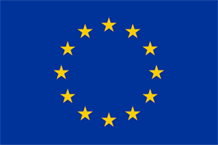SUBSAMPLING TO REDUCE ACQUISITION TIME
The advent of very high field MRI allows us to obtain images of the human body, and in particular the brain, at previously unattained spatial resolutions. But these resolutions are achieved at the cost of a considerably long acquisition time. To overcome this constraint, researchers from the MIND team (ex-PARIETAL, NeuroSpin) and BAOBAB (NeuroSpin) have already developed a method based on a mathematical process, compressed sensing, to reconstruct complete high-resolution images from a minimal acquisition. The method has also benefited from the collaboration of this team with the Cosmostat laboratory (CEA-Irfu) during the COSMIC project.
SPARKLING, as it is called, has already shown its full potential on two-dimensional imaging (High-resolution MRI: how not to spend hours?). Researchers have extended the method to 3D imaging, used to achieve high resolution in the three directions of space. 3D imaging is still not widely used in clinical practice, yet it offers a gain in signal-to-noise ratio that is particularly useful for high-resolution imaging, or heteronuclear imaging (e.g. sodium imaging) at ultra-high magnetic field (7 Tesla, 7 T). But easier said than done: the data acquisition space of 3D imaging is itself more complex (a Fourier volume) than that of 2D imaging (a Fourier plane).
OPERATing IN THE THREE DIMENSIONS OF THE FOURIER SPACE
Until
now, to do 3D MRI, SPARKLING proceeded with a sub-sampling in two dimensions,
plane by plane, and then stacked the planes, thus limiting the acceleration
according to the third dimension; the computation times to reconstitute the 3D
image were long. In a paper published in IEEE Transactions on Medical Imaging,
the same collaboration between MIND and BAOBAB has established a new algorithm
capable of performing true 3D subsampling of Fourier space. SPARKLING 3D uses
Fast Multipolar Methods (FMM), originally developed in astronomy to accelerate
the computation of long-range forces in "N-body problems". With these
techniques, the generation of the subsampling scheme trajectories now takes
only 6 to 10 hours depending on the target resolution of the images, instead of
several weeks in an initial attempt.
As a result, researchers have designed patterns with up to 10 million samples of Fourier space. Using retrospective and prospective studies on a phantom and in vivo acquisitions at 3 Tesla (3T), they show that this new optimization outperforms current 3D strategies (including those that proceed by stacking Fourier planes).
Overall, the method allows for 2.5-3.75x shorter scan times, without compromising image quality, compared to already accelerated 4x parallel imaging (compared to full Fourier space acquisition). The first steps demonstrated at 7T, notably in sodium imaging, suggest accelerations up to a factor of 64. To be continued...
Contact CEA-Joliot:

Financement européen
This work has benefited from the european program
NUMERICS for the funding of thesis in numerical simulation.
[1] T2*-weighted MRI (T2 gradient echo sequence) is an MRI modality classically used in the clinic.